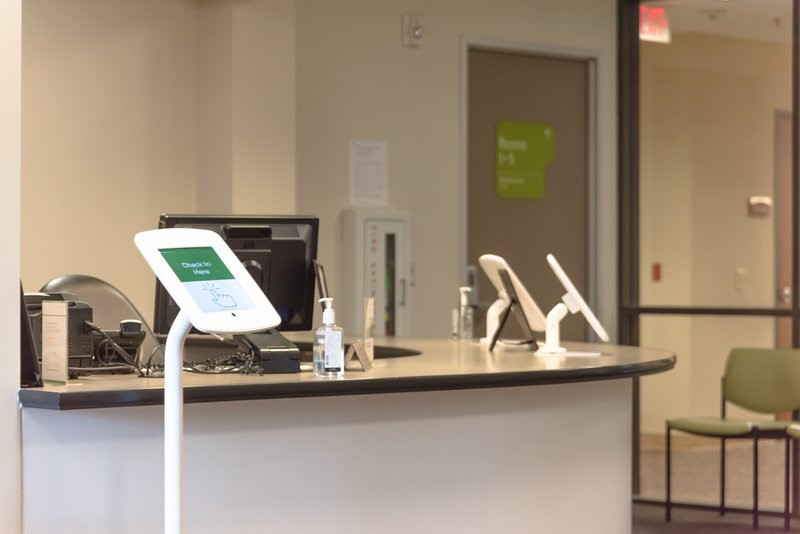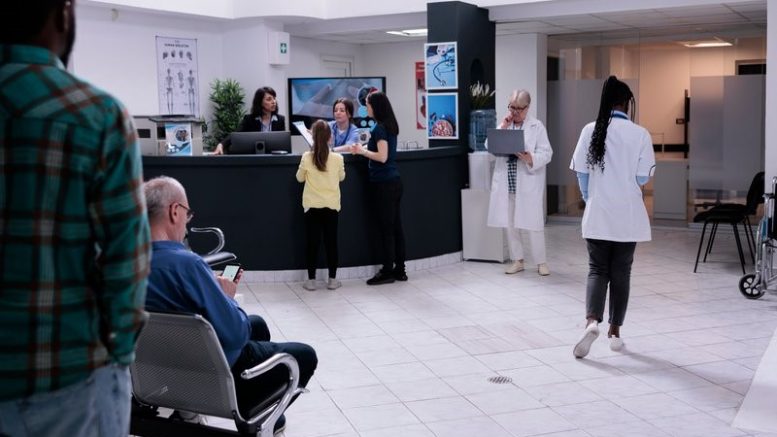Thanks to mobile technology, hospitals and healthcare facilities are getting better at monitoring patients and obtaining more accurate readings. Corporate-owned, single-use (COSU) devices the size of smartphones measure a patient’s vital signs. They then send the data wirelessly to healthcare servers for record-keeping.
As a result, attending doctors and staff can receive information on the fly—even when they’re away from the patient. This allows them to make key decisions and order timely treatment faster than ever. Improvements like these are helping the digital health market grow by leaps and bounds. The industry projects a 25% CAGR between 2019 and 2025. That’s from a figure of $175 billion in the initial year to $657 billion by 2025.
Notably, not all COSU devices are complex machines involving cutting-edge technology. Healthcare providers usually deploy single-purpose computers, tablets, and displays to help with operational and administrative tasks. These include information kiosks, registration consoles, staff tablets, and digital signage.
COSU in Healthcare: Understanding the Need for Dedicated Devices
Simply put, COSU devices lead to superior outputs and more efficient operations. Healthcare providers can deliver better results for their patients. Staff workers can enjoy a more productive workday owing to efficient machines that generate faster output. And while patients spend less time and effort being monitored, these devices also produce more accurate results.
A typical healthcare facility uses COSU devices to manage the flow of patients—for instance, registration, making appointments, measuring vitals, and recording information. Throughout the building, other COSU devices can help provide information updates, instructions, and directions, as well as share informative educational media.
Best Use Cases for COSU Devices in Healthcare
COSU smart devices stand at the center of the digital healthcare revolution. Here, devices feature computers that are as powerful as they are compact, allowing medical teams to gather crucial health information on patients wherever they are. A case in point is the wireless pacemaker. Today’s versions are much smaller than earlier models. They also feature wireless technology that lets them send data to standalone monitors. Other COSU devices making waves include smart tablets carried by nurses making their rounds, smart hospital beds that monitor patients’ vitals and activities, and wearable emergency response bracelets.
Other less complicated—but equally important—COSU devices consist of equipment used in healthcare administration. These types of devices help patients complete documentation requirements as well as provide healthcare officers with instant patient information without the need to write everything over and over again.
Self-Check-In and Check-Out Kiosks
Old-school methods require patients to fill out forms manually, which office staff will either file or input into the computer. This repetitive practice can lead to long lines and frustrated patients. Plus, in emergencies involving incapacitated patients, clerks might miss essential information—such as allergies and medical complications—amid the confusion. Instead of having to perform manual check-ins, COSU devices can simply ask patients to log into their accounts. The system will then process the check-in automatically. When checking out of a facility, patients only need to reverse the process and, if everything’s in order, they can go home without delay.
Form Filling
Thanks to digital records and COSU devices, patients are free to walk into any self-service kiosk to register without the need for pen or paper. A provider-issued medical bracelet typically contains important patient data, such as name, birthdate, medical history, allergies and complications, and insurance details. This information can be transmitted wirelessly to the healthcare facility’s registration system.
For less advanced facilities, hospital staff may assist patients by having them fill out information on COSU tablets. Existing patients just have to log into their accounts and then update their information. New patients simply fill out the registration form directly on the tablet, which then wirelessly transmits the information to the servers for immediate processing.

Queue Registration
To manage long lines at the doctor’s office, many providers install a smart TV display in the waiting room. This repurposed television will collect data from the queueing system, transmit continuous updates, and display them on the screen. Patients thus have an easier time checking where they are in the queue or if there are any delays.
Other COSU display devices might show updates about which rooms the patients should proceed to. This assists in avoiding confusion about directions as well as reducing overcrowding at the information desk. In between updates, COSU screens can display relevant information, such as health advisories, announcements, or other messages.
Patient Information
Collecting and managing patient information is the bread and butter of healthcare COSU devices. Wearable devices similar to smartwatches measure a patient’s heart rate, blood pressure, body mass index, oxygen levels, sleep and exercise activities, and even blood sugar levels. The devices then automatically transmit this information to providers so that healthcare professionals can make accurate diagnoses.
In addition, wearable devices allow healthcare providers to monitor patients regardless of their location. This includes home or work settings. The devices can also automatically alert medical authorities whenever they detect abnormal readings, such as elevated blood pressure, abnormal heart rate, or excessive physical activity.
Meanwhile, patients confined to healthcare facilities enjoy similar services using the hospital’s monitoring equipment. Doctors and nurses can access recorded data on their smartphones or tablets, which they can use when conferring with other doctors or talking to the patient.
COSU Devices Are Healthcare Game Changers
COSU devices should play an important role for providers intent on delivering consistent and quality healthcare. Likewise, companies should invest in quality device management solutions that help manage, maintain, and secure hospital smart devices. Failing this, you’ll have to spend significant amounts of time and money on keeping device software updated, preventing unauthorised access, and ensuring data safety and privacy.
Cloud connectivity is a key attribute of a competent device manager. Your system should easily connect to all registered COSU devices wirelessly to receive software, firmware, and application updates and fixes. This also means having remote access to each device in case of attempts to steal the actual unit or the data it contains. Once connected, admins are able to shut down or freeze the device—or even initiate a full data wipe. Afterwards, geolocation services can help track down the physical location of missing devices for later recovery.
By investing in COSU devices, you’ll improve both the productivity and efficiency of your healthcare facilities. At the same time, make sure you also allocate sufficient resources to secure reliable device management software. Your smart device users and customers will thank you for it.
By Nadav Avni, CMO of Radix Technologies





